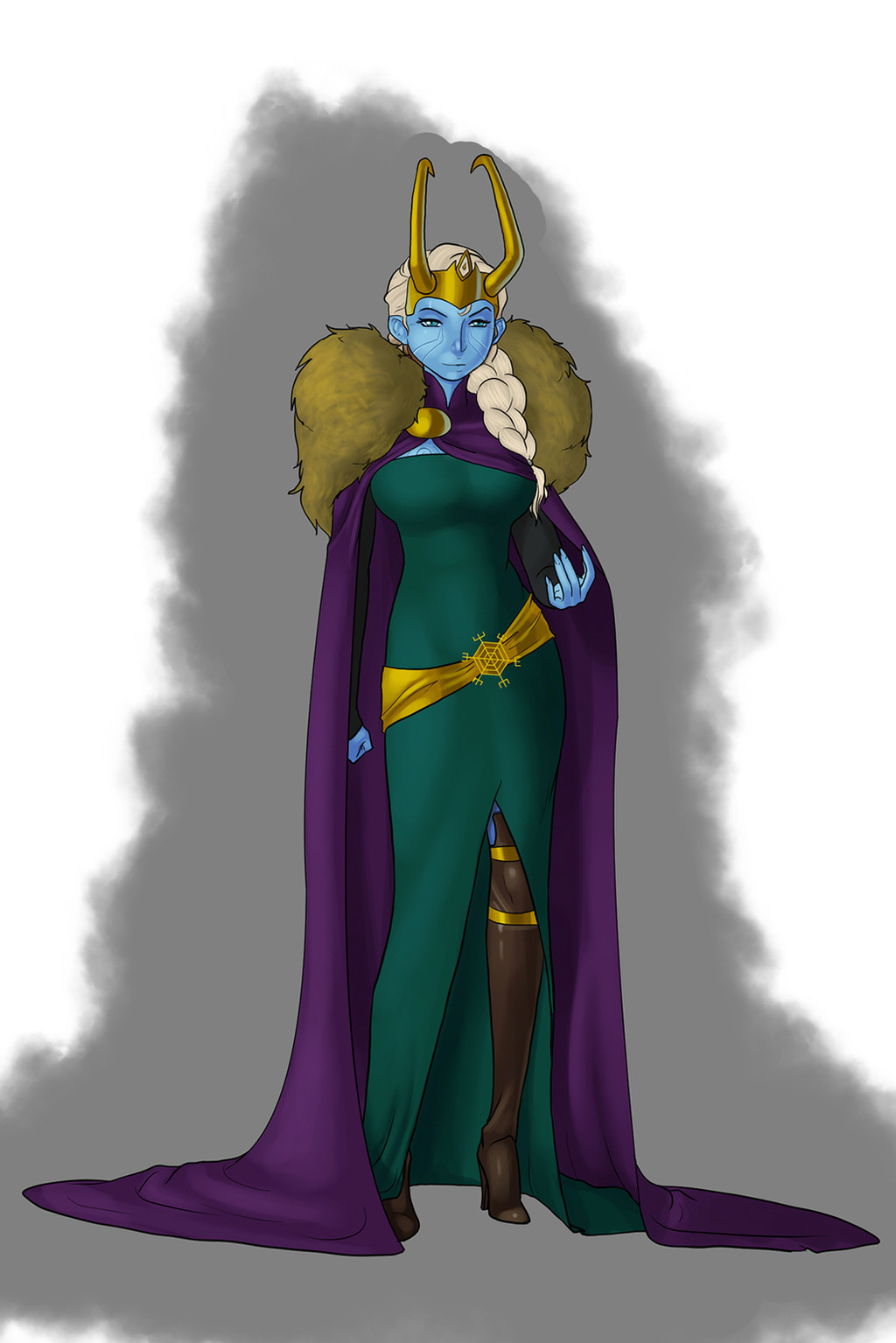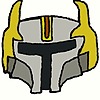HOME | DD
 lexikimble — Loki/Elsa Fusion
lexikimble — Loki/Elsa Fusion

Published: 2014-01-25 19:15:43 +0000 UTC; Views: 8802; Favourites: 194; Downloads: 208
Redirect to original
Related content
Comments: 11

👍: 1 ⏩: 0

👍: 1 ⏩: 0

Love the Frost Giant heritage you shown here! Oddly Loki despite being a Frost Giant in mythology and comic, was sometimes considered a personification of fire. Then again, the jotun were a lot like Marvels deviants, with very variable form and powers.
👍: 0 ⏩: 1

Actually he was a HALF-Jotun in Norse mythology. And he was aware of that since he was a child. He came to Asgard on his own will. And he wasn't evil either. And rather than personification of fire, he more of a shapeshifter (he even had sex with a horse and got himself pregnant), illusionist and a sorcerer.
👍: 0 ⏩: 1

Well It was never clear if he is a half-jotun or full Jotun, his mother Laufey(they confused her for Loki's father, because of matronym Loki Laufeyjarson, rather than having a patronym) isn't clear if she was a Jotun, Vanir or Aesir. Her title Nal, or 'Needle" was supposed to mean she 'both slender and weak", but Laufey means "full of leaves". It may indicate she's a Vanir or Elf from such meanings, but Jotun were shown in such diffrent forms that she may be giant as well. Her name with Fárbauti(dangerous hitter) may be connected with lightning hitting the leaves or needles of a tree to give rise to fire, which connects with Loki/Loge. Both fire and water were connected with shapeshifting, so he may be both a changer of shapes, and a allegory for fire. He may had fragmented into several being in mythology overtime: Asa-Loki(may be identical with Lodur, and is the Loki most often we see in Edda’s) Loge the fire, and Uthgard-Loki, and archeological findings almost always connect Uthgard-Loki and the normal Loki, despite, appearing as separate in one myth. She may also be connected with the Finnish goddess Loviatar. Generally, offspring between god and giant is counted as fully divine(Thor and Odin themselves had Jotun mothers), and calling Loki half-god or demi-god, may mean that although he was a companion of gods, lived with them, and was prominent in the myths, he had been never truly worshipped(at least, in ancient/medieval times, I don't count here Neopaganism, so he doesn't count as a 'full' god.
👍: 0 ⏩: 1

Ah, so you know the story. I'm actually a great admirer of Snorri Sturluson and his works such as Prose-Edda, Heimskringla and all that. Icelanders are indeed great writers and poets of the Scandinavians. lol. But since you have read the story of Óðinn, Vilji and Vé and how they created the Earth. And how it all ended during Ragnarök. and all that. I probably don't have to explain anything further
Útgarða-Loki was not related to Loki, by the way. He was a Jötunn who was sort of like the evil version of Loki. And Logi wasn't even real, he was just an illusion.
Loki was a god but served little purpose for mortals and helps mostly just his fellow Æsir. He often caused mischief but he always made up for it. He was the god of Schemes and Tricks. At least according to Prose-Edda (I've read it in Norse and it sounded a lot better that way).
👍: 0 ⏩: 1

Indeed, Snorri Sturluson was a brilliant poet.
With Loki, the situation is a bit complex, as he could fragment before Eddas were written. A similar thing could happen with Friggia/Freyja. The History of the Danes, composed in the 13th century by the Danish writer Saxo Grammaticus, describes Uthgard-Loki as the exiled Loki from Asgard, for example.
Maybe Uthgard-Loki was separated from Loki, to as a method to (at least for a time) separate him from his villainous elements? A similar thing happened in Zoroastrianism, the Indo-Aryan god Indra was separated into the angel Verethragna, and demon/Daeva Indra, the same happened Saraswati, who was fragmented into the demoness Hariti, and the goddesses/angels Anahita and Haurvatat.
A similarly confusing example from Norse Mythology is Tyr, who could originally be the King of Gods, but got degraded, which was possibly explained in a lost, earlier version of the myth with Fenrir. It is also possible that Tyr/Tiwaz was for a time merged/conflated with Odin/Wotan, as both were gods of war(and the fact that Justice(Tyr’s domain), was often connected with Death(Odin’s domain), through death sentences, like hanging), and after the merger ended/failed, Odin got out with the position of Allfather, and Tyr became a relatively minor god of war and justice(and even justice got latter partially absorbed by Forseti). The relict of this may be one of Odin's names, Hangatyr, god of the hanged/hanged god, as hanging, as a matter of justice, was/should be connected to Tyr.
👍: 0 ⏩: 1

Well, Snorri was Christian and therefore took a lot of inspiration from the bible. But he was his own kind of Christian, he did not believe that churches were necessary to worship god. And he was also a historian, Lawspeaker of Alþingi, a chieftain of the Sturlung family clan during the medieval Icelandic Nationhood and a former advisor to the Norwegian King (he wanted Norway to ally itself with Iceland, in order to preserve the country). So he knew a lot of things of the outside world, he studied the secrets of magic (he even used the Swastika in his works), origin of the Scandinavian peoples before the Viking age and as well Ancient Greece and Ancient Rome. So most things which is written in the Eddas are both his own ideas and his inspiration. Some say he could predict the fates of nations (I personally don't believe that, he probably just put possible theories) such as the fate of the Holy Roman Empire, the Danish tyranny over Norway, Iceland, Faroes and Greenland and some say that he was the "Leonardo Da Vinci of politics". He hated absolute monarchy, he didn't believe that a deity would hand-pick a monarch (as described in Gylfaginning, Óðinn says he does not concern himself of mortal rulers and that he pities them for not being inspired by the Gods).
About Útgarða-Loki, he was basically Loki's counterpart. Loki does pranks and all that, but he does it fairly enough and makes up for them. Útgarða-Loki casts illusions and enjoys seeing people get hurt and lied to.
👍: 0 ⏩: 0

Ohh, drawing on the frost giant heritage, neatly done.
👍: 0 ⏩: 0


























